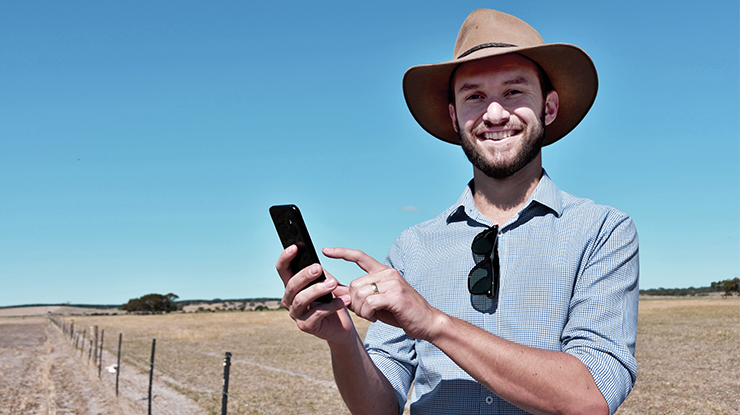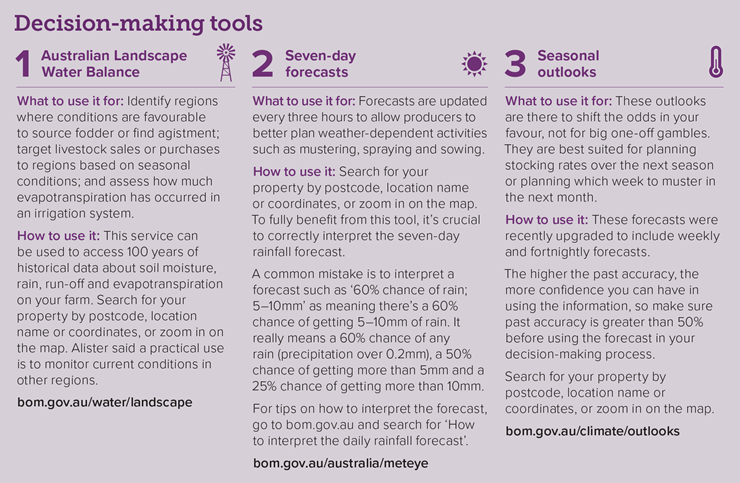 Alister Hawksford, Bureau of Meteorology.
Alister Hawksford, Bureau of Meteorology.
A well stocked weather toolkit
Australian livestock producers are contributing to the development of new seasonal climate forecasts to ensure they’re easy to use and provide relevant information for on‑farm decisions.
Alister Hawksford, who heads the Bureau of Meteorology’s (BoM) Agriculture Program, said feedback from producers has helped identify the biggest challenges with making weather‑dependent decisions.
“When it comes to forecasts for specific decisions, most producers we surveyed said stocking and restocking was their most important decision, followed by when to fertilise or sow crops and pastures,” Alister said.
“This reinforces the importance of weather information that supports decisions around when and how well pastures and crops will grow.”
He said while BoM is working with industry to make forecasting tools more accurate (for example, through the Forewarned is Forearmed project with MLA and others, producers can create opportunity by applying existing products to key decisions.
“Our seven‑day rainfall forecasts are misinterpreted more than 90% of the time, so understanding how to use forecasts is critical to good decision making,” he said.
“We’re exploring options with partners across the country to create more tailored, interpretable forecasts that directly relate to key decisions.”
Looking ahead
Alister shared his tips for using forecasts accurately at an MLA Livestock Advisor Update late last year.
“Increasing climate variability is increasing the financial volatility of grazing businesses and it’s no longer enough to review seasonal trends,” he said.
“We’re in a new climate state with more extreme and unpredictable events, so we need a renewed focus on what’s coming up.”
While he doesn’t advocate tossing out your property’s historical rainfall records just yet, Alister said there are three products (see below) which should be part of a producer’s decision‑making toolbox.
“Use these tools to drill down to farm‑level information and mitigate ever‑increasing weather and climate variability.
“The key is to understand how to interpret information from each tool, and which tool provides the most applicable information for specific decisions.”




